#leadership behaviour
Text
Assess Leadership Behavior Effectively With Recruitment Tests and Assessments Online
Our instruments for evaluating leadership behavior are made to identify the qualities of successful leaders. Using online recruitment tests and assessments, you may find future leaders who can motivate teams, spur corporate expansion, and adjust to shifting market conditions. For any further information visit: https://www.recruitment-tests.co.uk/site/main/eq
0 notes
Text
Transform Your Team with Proven Leadership Behaviours and Strategies!
Leadership behaviors cultivate effective communication, motivate teams, and resolve conflicts efficiently. They inspire innovation, foster employee development, and guide strategic vision. Barry Moline is provide for Best Leadership behaviour strategies.
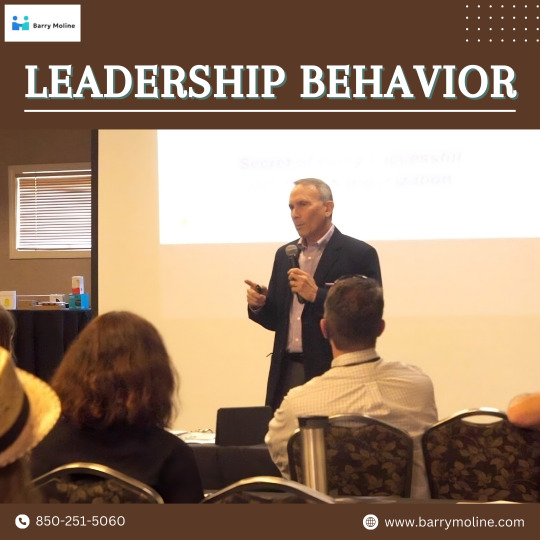
0 notes
Text
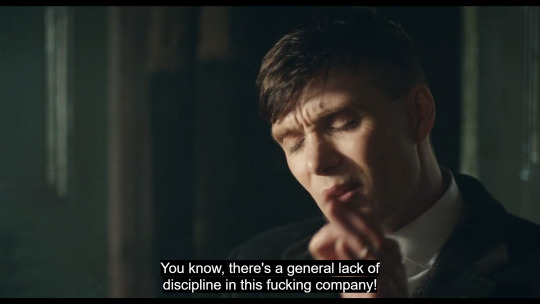
and who's supposed to enforce this bozo
#my fave thing about tommy is that he's terrible at like most things that pertain to leadership EXCEPT like ... strategizing#he'll have his little plans but neither can he argue for them nor can he make anyone ever listen to him#it does degrade into some pretty bad behaviours of his own re: jumping stuff on people#it's also very funny#this is not a man who's well respected hhdhdd
17 notes
·
View notes
Text
i'm watching ted lasso for the first time and it is so painfully sid to have imprinted like a baby duckling on this dweeb whose motto is "success is not about the wins and losses. it's about helping these young fellas be the best versions of themselves on and off the field" and who solidly forbids backchat about teammates and who thinks the single most sacred part of being on a sports team is PRACTICE
#i 100% think sid watched this show#imprinted on ted as a model of how he wants to lead#resolved to mimic that behaviour in his own leadership#then got on the ice and immediately forgot all his lofty ideals the first time he got slashed#sidney crosby#ted lasso#or ''fred lasso'' as my mum calls it
169 notes
·
View notes
Text
Making a distinction upfront changes the way a situation occurs to you...
A short dedication to Professor Govindrajan who changed the way I experienced my management education...
June 2000. Humanity has survived the millennium bug. The 4th term at XIM Bhubaneshwar has just begun. Bang in the middle of the Orissa summer, a Business Management elective is scheduled at 3:00 in the afternoon. The elective is over subscribed largely based on the reputation of the Professor teaching the course.
I arrive in the classroom 10 minutes ahead of time. Prof. G is already seated at a…

View On WordPress
2 notes
·
View notes
Text
Things I Learnt Today about Emotional Intelligence
There are more than 600 different words in the English language just for different kinds of emotions. This is to give an idea and set a stage about how many different emotions we as humans go through each and every day

We also cannot avoid dealing with emotions of other humans around us say friends , family or colleagues .
Being aware of our and others emotions and managing ours and others emotions is known as Emotional Intelligence.
One such example which I came across was the Zinedine Zidane headbutt incident where in a fit of anger Zidane charged at Italian player Materazzi and was shown a red card, that too in final few crucial moments of the 2006 Soccer World Cup final.
Later Zidane accepted that he has a regret that France could not win that match. An emotional reaction could have a deep impact on the desired result .
1. Respond not React : This comes with a lot of practice. Be it at work or at home , while dealing with kids or clients. It is important to be aware of our emotions however respond according to the appropriate need of the situation.
2. Channelize your emotions: feelings of suppressed for a long time could burst out at the wrong place. Find a way to express your emotions with a friend or a family or by writing a journal.
3. Practice makes a man perfect: consciously practice not taking key decisions not under the influence of emotions.
2 notes
·
View notes
Text
MORAL DILEMMAS: INTERTWINED BEHAVIOURS & WAYS TO NAVIGATE - CHAPTER - 01
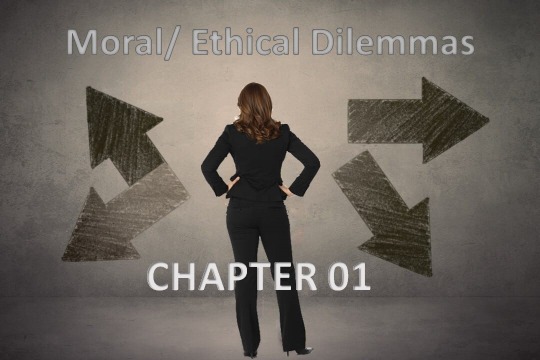
Morality is defined as the principles concerning the distinction between right and wrong or good and bad behaviour (Oxford Dictionary). Effective ethics instruction is about more than distributing a list of moral guidelines; it requires educating learners on how to navigate their own moral decision-making. Learners learn to search for and evaluate their assumptions, to excavate the reasons behind those assumptions, to examine without prejudice another’s opinion and to make a thoughtful decision with confidence.
What Is Ethics:
Ethics provides a set of standards for behaviour that helps us decide how we ought to act in a range of situations. In a sense, ethics is all about making choices, and about providing reasons why we should make these choices.
Ethics is sometimes conflated or confused with other ways of making choices, including religion, law or morality. Many religions promote ethical decision-making but do not always address the full range of ethical choices that we face. Religions may also advocate or prohibit certain behaviours which may not be considered the proper domain of ethics. Many people use the terms morality and ethics interchangeably. Others reserve morality for the state of virtue while seeing ethics as a code that enables morality. Another way to think about the relationship between ethics and morality is to see ethics as providing a rational basis for morality, that is, ethics provides good reasons for why something is moral.
Traditional Interpretations Of Ethics:
There are numerous ways to think about right and wrong actions or good and bad character. The field of ethics is traditionally divided into three areas:
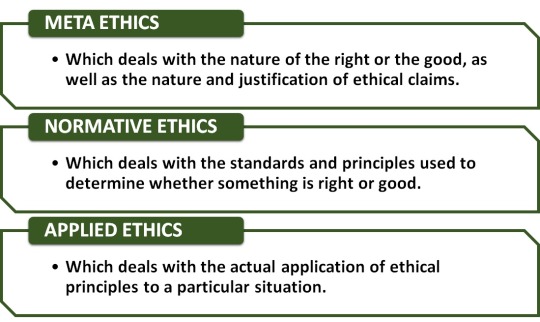
Three Broad Types of Ethical Theory:
Ethical theories are often broadly divided into three types. Each of these three broad categories contains varieties of approaches to ethics, some of which share characteristics across the categories.

Consequentialist Theories
The Utilitarian Approach: Utilitarianism is one of the most common approaches to making ethical decisions, especially decisions with consequences that concern large groups of people, in part because it instructs us to weigh the different amounts of good and bad that will be produced by our action. This conforms to our feeling that some good and some bad will necessarily be the result of our action and that the best action will be that which provides the most good or does the least harm, or produces the greatest balance of good over harm.
The Egoistic Approach: One variation of the utilitarian approach is known as ethical egoism, or the ethics of self- interest. In this approach, an individual often uses utilitarian calculation to produce the greatest amount of good for him or herself. The Russian-American philosopher Ayn Rand (1905-1982), who, in the book The Virtue of Selfishness (1964), argues that self-interest is a prerequisite to self-respect and to respect for others.
The Common Good Approach: The French philosopher Jean-Jacques Rousseau (1712-1778) argued that the best society should be guided by the general will of the people which would then produce what is best for the people as a whole. This approach to ethics underscores the networked aspects of society and emphasizes respect and compassion for others, especially those who are more vulnerable.
Non Consequentialist Theories
The Duty-Based Approach: The ethical action is one taken from duty, that is, it is done precisely because it is our obligation to perform the action. Ethical obligations are the same for all rational creatures (they are universal), and knowledge of what these obligations entail is arrived at by discovering rules of behaviour that are not contradicted by reason.
The Rights Approach: This approach stipulates that the best ethical action is that which protects the ethical rights of those who are affected by the action. It emphasizes the belief that all humans have a right to dignity. The list of ethical rights is debated; many now argue that animals and other non-humans such as robots also have rights.
The Fairness or Justice Approach: The American philosopher John Rawls argued that just ethical principles are those that would be chosen by free and rational people in an initial situation of equality. This is considered fair or just because it provides a procedure for what counts as a fair action, and does not concern itself with the consequences of those actions. Fairness of starting point is the principle for what is considered just.
The Divine Command Approach: As its name suggests, this approach sees what is right as the same as what the Devine Beings command, and ethical standards are the creation of their will. Because Devine Beings are seen as omnipotent and possessed of free will, they could change what is now considered ethical, and they are not bound by any standard of right or wrong short of logical contradiction.
Agent Centred Theories
The Virtue Approach: One long-standing ethical principle argues that ethical actions should be consistent with ideal human virtues. Because virtue ethics is concerned with the entirety of a person’s life, it takes the process of education and training seriously, and emphasizes the importance of role models to our understanding of how to engage in ethical deliberation.
The Feminist Approach: This approach emphasizes the importance of the experiences of women and other marginalized groups to ethical deliberation. The principle of care as a legitimately primary ethical concern, often in opposition to the seemingly cold and impersonal justice approach. Like virtue ethics, feminist ethics concerned with the totality of human life and how this life comes to influence the way we make ethical decisions.
Interpretation of Moral/ Ethical Dilemmas
In philosophy, ethical dilemmas, also called ethical paradoxes or moral dilemmas, are situations in which an agent stands under two (or more) conflicting moral requirements, none of which overrides the other. A closely related definition characterizes ethical dilemmas as situations in which every available choice is wrong. The term is also used in a wider sense in everyday language to refer to ethical conflicts that may be resolvable, to psychologically difficult choices or to other types of difficult ethical problems.
The crucial features of a moral dilemma are these: the agent can do each of the actions; but the agent cannot do both (or all) of the actions. What is common to the cases in a moral dilemma (or ethical dilemma) is conflict. The agent thus seems condemned to moral failure; no matter what he/she does, he/she will do something wrong (or fail to do something that he/she ought to do).
When one of the conflicting requirements overrides the other, we have a conflict but not a genuine moral dilemma. So, in order to have a genuine moral dilemma it must also be true that neither of the conflicting requirements is overridden. What makes these questions dilemmas is an individual’s definition of right and wrong or good and bad. scenarios.
Some ways in which such ethical dilemmas may be addressed are:

***To be continued in Chapter 02 (Moral Dilemma Questions & Common Situations, Approaches For Ethical Decision-Making, Importance of Understanding Moral Dilemmas, Framework for Making Moral/ Ethical Decisions)

Content Curated By: Dr Shoury Kuttappa

#leadership#moral dilemma#ethical dilemma#emotional intelligence#Decision Making#human behaviour#uncertainty#ambiguity
2 notes
·
View notes
Link
No matter how consistent you are with your habits, it is inevitable that life will interrupt you at some point. Perfection is not possible. Before long, an emergency will pop up - you get sick or you have to travel for work or your family needs a little more of your time.
Whenever this happens to me, I try to remind myself of a simple rule: never miss twice. Let's discuss in more depth...
#behaviours#change#energy#habits#joy#leadership#resilience#selfdevelopment#transformation#wellbeing#zest
0 notes
Video
youtube
Leadership and the Importance of Values
#youtube#Leadership and the Importance#leadership importance#leadership training#leadership values#Leadership and the Importance of Values#leadership development#leadership success#leadership values and behaviours#the importance of values#importance of values and ethics
1 note
·
View note
Text
THE THEORY OF FLOW: UNDERSTANDING THE SCIENCE OF OPTIMAL EXPERIENCE - CHAPTER - 02
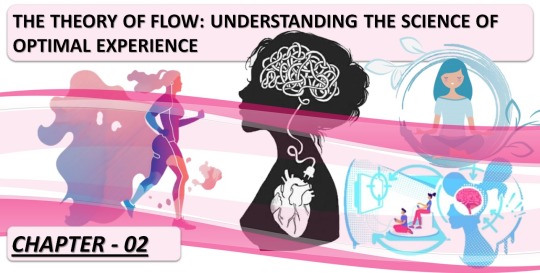
***Continued from Chapter 01 (Covered previously: What is Flow, Benefits of Flow, The Neuroscience of Flow, Attaining a Flow State, Flow State Triggers)
Link to Chapter 01:
The Importance of Flow in the Workplace
In the workplace, Flow has huge implications for productivity. We’ve all heard the old adage pick a job you love and you’ll never work a day in your life. In the reality of the 21st century, however, distractions abound. From buzzing telephones to constant email notifications, we’re much better equipped to focus on and enjoy the tasks at hand if we can enter a Flow state.
There are many benefits that Flow can have in the workplace – starting with faster learning.
Flow even has implications for how we tackle our approach to innovation. These aren’t unrelated to the concept of faster learning, either. As entering and attaining a Flow state is closely linked to our awareness, being ‘in Flow’ can help us mitigate the impacts of those constant distractions on our creativity. Flow allows us to absorb information, synthesize it, and integrate it. This drives the creative process. So while everyone else is driven to distraction, people in flow are adapting — they’re using the state to take performance to the next level.
How Can We Measure Flow?
Flow is a subjective experience, which creates a challenge when it comes to identifying psychometrically sound measurement. Because the enjoyable experience of flow represents both the reason for and outcome of engaging in an activity, its measurement represents an additional challenge. The most common way to measure flow is by asking respondents about their experiences, which has been achieved via the following methods:

Integrating The Concept of Flow in Education & Learning
On some level, flow experiences will always be serendipitous. But we can create an environment where flow experiences are more common. Flow is one of eight mental states that can happen during the learning process. In addition to flow, these mental states include anxiety, apathy, arousal, boredom, control, relaxation, and worry; they result when a learner experiences a combination of skill and challenge levels of a task in non-optimal combinations.
Flow is not an easy state to achieve and distractions will interfere with it or stop it from happening in the first place. One approach involves bringing curricula alive by making them relatable to real life and rooting them in the now. A teacher needs to be attentive to the learner’s needs and interests, they need to show enthusiasm and excitement for learning:
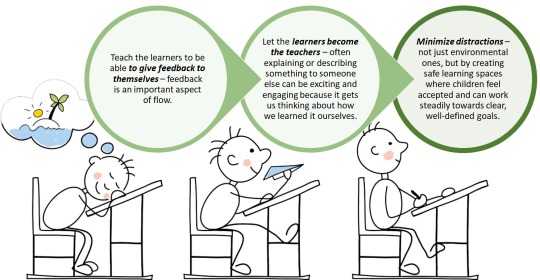
#1: Learners Need to Find the Task Intrinsically Rewarding: We have to start with something that fits our passions, interests, talents, or desires. It can be solitary or in a group. It could be competitive or non-competitive. It could be athletic or artistic. But it has to start with an internal drive.
#2: Learners Need Clear Goals & A Sense of Progress: There’s a sense of intentionality to flow experiences. Learners need to know what they are doing and where they are going. As they move through the task, there is a sense of progression. Hence, a sense of agency is so important. Learners need to feel that they have a command over their actions. What people enjoy is not the sense of being in control but of exercising control in difficult situations.
#3: The Task Needs Clear & Immediate Feedback: It must be easy to figure out what’s working and what’s failing. Learners need not have to stop what they are doing to receive feedback. Unlike a classroom, where feedback often disrupts the learning process (especially with tasks), the idea here is that the feedback is immediate and that we modify and adjust what you are doing based on this instant feedback.
#4: The Challenge Must Match the Perceived Skills: This requires a sense of personal control or agency over the task. If a task is too easy, learners might experience apathy or boredom but if a task seems too hard, they will be anxious.
#5: Flow Requires Powerful Focus On the Present Moment: Often, in the state of flow, you experience hyper-focus. You seem intensely aware of what’s around you. At the same time, you are capable of tuning things out entirely. At times, you don’t even feel like you’re concentrating at all. Things are just clicking and you hardly notice how intense your focus has become.
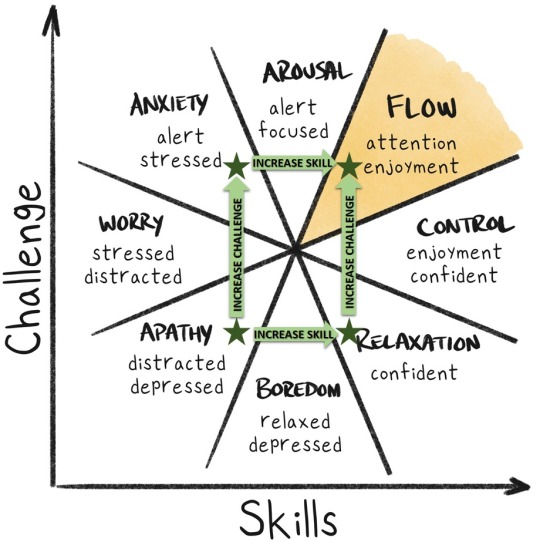
When learners are experiencing flow, they often have a sense of “losing themselves.” At the same time, these moments when they have “lost themselves” are the very moments where learners feel most alive. This sounds great but it can be challenging to reach a state of flow in a school system with bells, tight schedules, curriculum maps, and testing. These flow experiences are rare in the classroom, partly because it requires total buy-in from learners. We can’t make students hit that state of focus or fall in love with the learning process. But we can create the conditions that make it possible for students to reach a state flow. Here are some ways in which this may be explored:
A) Provide The Right Scaffolding: Too often, learners give up because what they are doing is way too difficult and there is a sense that they will never learn it. Other times, learners are bored and the excessive scaffolding becomes a hurdle they have to climb over. Here’s where it can help to have students self-select the scaffolding. Instead of providing all the scaffolding for each student, we can provide tutorials, sentence stems, and graphic organizers that any learner has access to. They can learn to determine what they know, what they don’t know, and where to find additional support.
B) Intrinsic Motivation: It’s not surprising that students hit a state of flow when they are out on the ball field or in a theater or while playing an instrument. Not only do they feel competent (because of the right amount of scaffolding) but they also love what they are doing. One of the challenges in the classroom is that the system is designed around extrinsic motivation. Everything from the tight curriculum map to the PBIS system to the traditional grading system seem to push compliance.
However, we can use these limitations as creative constraint with simulations and challenges. Also, shifting toward student-centered projects, like tapping into creativity and existential big ideas through Socratic Seminars and creation of podcasts, blog posts, and documentaries, etc., can help.
C) Recognize Learner Choice & Agency: This might involve scrapping weekly tests and devoting that time to choice-centered projects. It might involve letting learners chase their own questions with the inquiry-based learning. Learners could also own the creative process through a long-term design thinking project. Ultimately, we want to empower learners to own their learning. So, it goes beyond simply providing basic daily choices.
D) Minimize distractions: When learners are making things, they will be moving around and talking and it might even get loud, which can be distracting. We will need to reduce clutter or decrease noise to support learning. Sometimes the frantic pace can get in the way of extended learning opportunities. Learners may not have the chance to focus in a leisurely and relaxed way. Sometimes it is less about action and more about suspense.
E) Help Learners with Metacognition: Learners need to engage in metacognition if we want them to establish goals and then scrutinize and adjust their approach. We can model metacognition by talking through the process of assessing the task and determining an approach. It can help to ask learners to visualize what they will do in order to accomplish a task. When working in collaborative groups, learners can engage in metacognition through the project planning process. It means students will need to engage in frequent peer feedback and self-assessment.

Flow is a state of consciousness that is associated with optimal performance and well-being. By understanding the key components of flow and learning to cultivate it in our lives, we can enhance our creativity, productivity, and learning, as well as improve our well-being and happiness. Whether we are pursuing our hobbies, our careers, or our relationships, finding our flow can help us achieve our goals and live more fulfilling lives. Achieving a state of flow can be a great way to make the activities we pursue more engaging and enjoyable. Not only do people often perform better when they are in this state of flow, but they are also often able to improve their skills in that area. Fortunately, it is also a skill we can learn to achieve with practice. It is important to remember that flow is a dynamic and ever-changing state. As our skill levels increase, we will need to continue to adjust the level of challenge that is needed to help initiate a state of flow.

Content Curated by: Dr Shoury Kuttappa

#leadership#emotional intelligence#relationships#motivation#behaviours#self awareness#change#commitment#focus#decision intelligence#creativity
0 notes
Text
Habitude
Seeking help from a business and workplace coach? Look no further than Rod Francisco of Habitude. He is an experienced business and human resources executive leader and coach, with qualifications in business management, workplace coaching, international politics, strategy, business, human resources, and industrial relations. He has a well-developed communication style and extensive leadership experience. Reach out and connect with him today!
#Behaviour#business coach#Habitude#Human Resources#Leadership Coach#Rod Francisco#thecoachingdirectory#coaching#coaching solution#coaching services#business coaching#Practitioner of Extended DISC#disc
0 notes
Text
Empower Your Team with Leadership Motivation
Leadership motivation inspires individuals to achieve their full potential, fostering personal growth and professional development. It cultivates a positive organizational culture, driving productivity and engagement. Motivated leaders inspire teams to overcome challenges, innovate, and strive for excellence.

#leadership motivation#leadership behaviour#keynote speaker#best leadership characteristics#strategies for leadership
1 note
·
View note
Text
The Inorganic Human
The masks of the masses shrouded behind layers of filters socially accepted on a global platform used as often as a highlight for the eyes as are the make-up highlights of facial facades.
The real self, often ashamed of its own authenticity, looks at self from a mirror reflection as deemed unworthy for worldly pleasures and gains. This personality seeks out one more favorable and emulates it to…

View On WordPress
#affirmations#anxiety#behaviour#bible#blog#body#coaching#depression#encouragement#faith#God#healing#health#human#humanity#inspiration#inspire#Jesus#journey#leadership#life#meditation#mental#mentalhealth#mind#mindfulness#motivation#poetry#power#powerful
1 note
·
View note
Text
Organisation Hygiene - the forgotten ingredient at work
The word hygiene originates from the 16th-century modern Latin ‘hygieina’, meaning the art of health. Today – hygiene indicates practices conducive to maintaining health and preventing disease, primarily via cleanness.
Hygiene postmortem + choose the right fix
In this blog, hygiene, or organisational hygiene as we chose to call it, is directly attributed to the state of corporate culture and…

View On WordPress
0 notes
Text
#business assessment#business skills assessment test#business assessment tools#business assessment test#business analyst assessment#business behaviours assessment#business leadership competencies#computer literacy test#microsoft word test#microsoft excel test#microsoft office proficiency test#ms word test#microsoft excel assessment test#ms excel test#ms office test#microsoft office assessment test#ms word online test#microsoft word online test#microsoft office skills test#skills test on microsoft office
0 notes
Text
Composure Under Pressure in 5 steps
Composure Under Pressure in 5 steps
During my marketing years, I have had NPDs rejected by the trade, I have had to deal with the wrong barcode printed on the freshly printed packaging of a new product about to be launched, I have had to present my plans and manage difficult questions from the Group Management of a multinational who sometimes didn’t agree at all with the recommendations or spotted mistakes in my plan (note to self:…
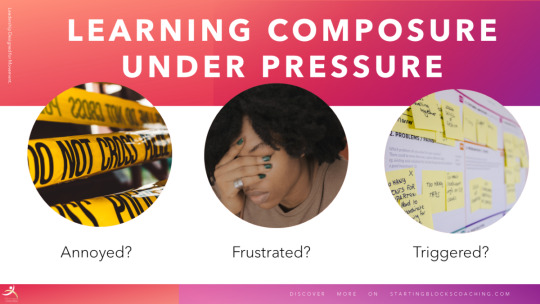
View On WordPress
#angry#attitude#behaviour#business#coaching#communication#composure#development#emerging leaders#frustration#growth#issues#leader#leadership#leadership skill#leading#learning#management#pressure#problems#resilience#self-development#skills#stress#stressful#team
0 notes